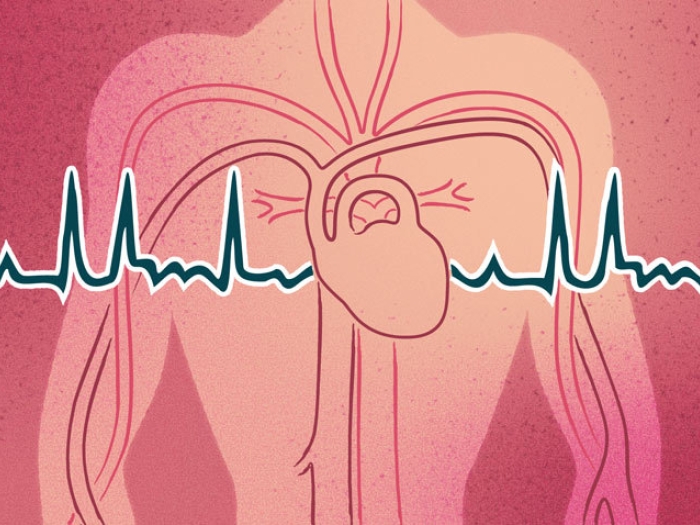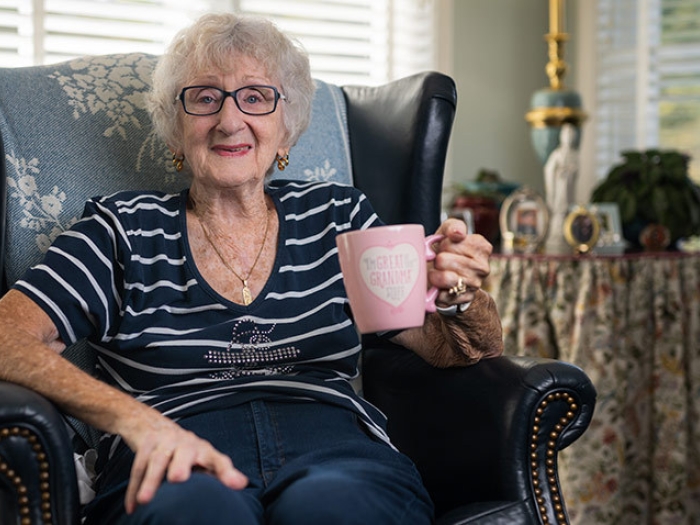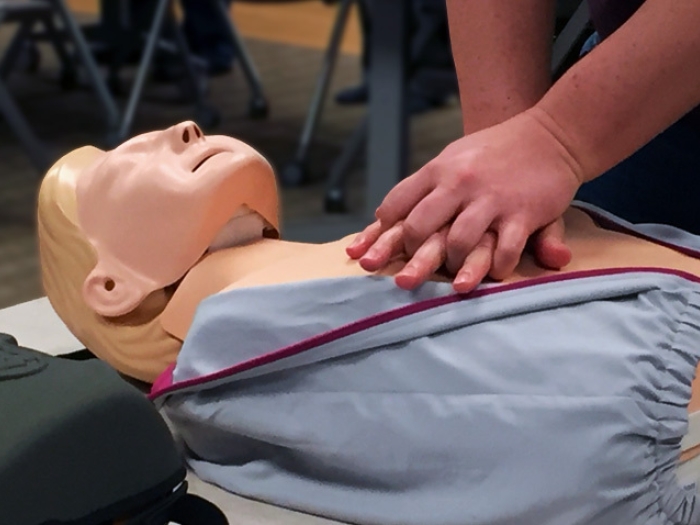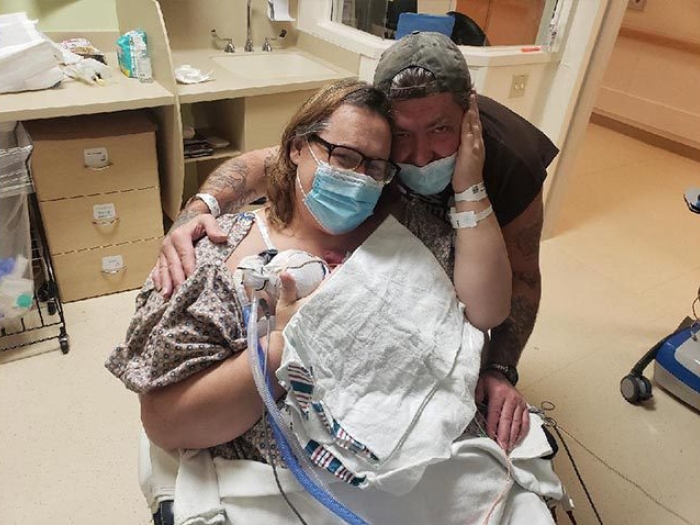A teen’s athletic pursuits came to a halt after a frightening diagnosis. Thanks to surgery at Michigan Medicine, he’s back in the game.
1:00 PM
Author |

Gehrig Elliott was wrapping up his typical workout routine early last summer when he noticed his right arm had swelled.
The 16-year-old assumed it might be a pulled muscle, a likely concern for a young athlete active in football, basketball and baseball.
LISTEN UP: Add the new Michigan Medicine News Break to your Alexa-enabled device, or subscribe to our daily audio updates on iTunes, Google Play and Stitcher.
But when the swelling hadn't subsided a few days later, Elliott's parents took him to see the family physician. The doctor suspected venous thoracic outlet syndrome, or TOS, and referred Elliott to the emergency department at University of Michigan C.S. Mott Children's Hospital.
"Within an hour of being in the emergency room, I was given an ultrasound and told I had a blood clot in my arm," Elliott recalls.
Signs of thoracic outlet syndrome
A shocking diagnosis for the otherwise healthy student, the clot was indeed caused by venous thoracic outlet syndrome, as the family's doctor suspected.
TOS encompasses a group of conditions caused by compression of the nerves and blood vessels that pass through the space between the collarbone and first rib, which sits just below the collarbone. This area is known as the thoracic outlet.
MORE FROM MICHIGAN: Sign up for our weekly newsletter
When compressed, these nerves, arteries and veins become compromised, causing pain or swelling in the neck, shoulder, arm or hand, depending on the type of TOS.
Often, the cause of TOS can't be determined. Some people are born with an extra rib that reduces the size of the thoracic outlet and compresses the nerves and blood vessels.
Other causes include a traumatic injury to the area and repetitive activities such as lifting heavy objects, working on a computer or being active in sports.
Symptoms of venous TOS include:
-
Swelling and discoloration of the hand or arm (bluish color)
-
Arm pain with exertion, swelling and fatigue
-
Blood clot (deep vein thrombosis) in veins in the upper body
-
Development of prominent collateral veins around the shoulder and on the arm. These are new veins that develop to accommodate increased venous pressure.
-
Numbness or tingling in the fingers
Multiple issues at play
Venous TOS becomes life-threatening if it leads to a blood clot that travels to the lungs, a condition known as pulmonary embolism.
SEE ALSO: TOS: When Swelling in the Arm Turns Serious
Fortunately, the clot that had formed in Elliott's arm did not result in one.
But his venous TOS was serious, says Michigan Medicine vascular surgeon Chandu Vemuri, M.D., an expert in diagnosing and treating the condition.
Elliott's case arose from a confluence of factors: His subclavian vein, which delivers blood from the arm to the heart, was compressed between his collarbone and first rib, both of which had been broken in the past.
And the compression, Vemuri notes, was exacerbated by scar tissue from the rib fractures — as well as by the congenitally narrow space between his collarbone, rib and anterior scalene muscle (a muscle located toward the side of the neck).
Repetitive activity related to sports also played a part. The lack of blood flow caused Elliott's subclavian vein to develop a clot.
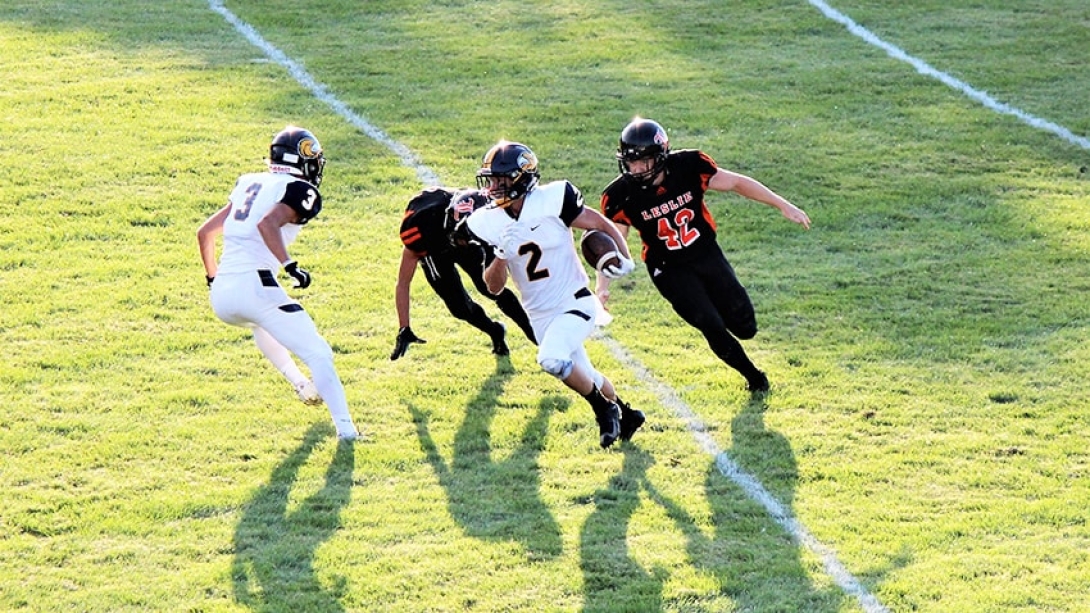
Treatment for thoracic outlet syndrome
Vemuri and his team, including Michigan Medicine interventional radiologist Minhajuddin Khaja, M.D., and vascular surgeon Dawn Coleman, M.D., determined the necessary treatment would involve a series of procedures.
They began with a venogram to deliver clot-dissolving drugs to the site of a clot via a catheter. In patients with a clotted subclavian vein, this procedure allows physicians to remove the clot and confirm a TOS diagnosis.
Vemuri then performed surgery, removing Elliott's first rib, portions of his anterior scalene muscle and scar tissue. A second venogram confirmed the vein was fully functioning.
After his stay at U-M's Frankel Cardiovascular Center, Elliott was discharged with instructions. Among them: no lifting and no sports for the foreseeable future.
He was also put on blood thinners for three months to prevent another clot from forming, and he began physical therapy to regain strength in his arm and shoulder.
Despite taking a hiatus from play during his junior year, Elliott remained a part of the football team at his school in Brooklyn, Michigan. He put down his helmet to join the staff as an assistant coach, sharing his knowledge of the game with younger teammates.
Back in the game
Now a high school senior, Elliott has reclaimed his role as cornerback and wide receiver.
"I feel great, and I'm back in shape. I'm cleared to play football," he says, and he hopes to have a strong season. "We'll see how it goes. I'm excited about it."
SEE ALSO: Teen Athlete's Extra Rib Leads to 'Dying' Hand and Vascular Surgery
He's also thankful to the doctors and nurses involved. So much, in fact, that Elliott is reconsidering his future career.
"I'd like to study something in the medical field," he says. "This experience has opened my eyes to different careers out there."

Explore a variety of healthcare news & stories by visiting the Health Lab home page for more articles.

Department of Communication at Michigan Medicine
Want top health & research news weekly? Sign up for Health Lab’s newsletters today!
